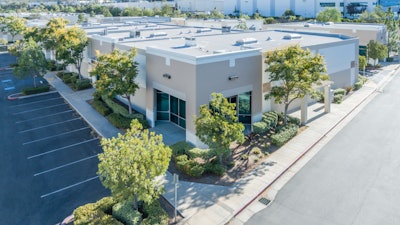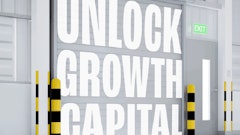
While the cannabis market continues to see the sale-leaseback as a potential capital solution, the sale-leaseback market has not been immune from the headwinds which continued to impact the cannabis industry in Q1 2023.
Supply chain disruptions, along with labor shortages and an opaque regulatory environment continue to be a governor on activity. Additionally, in the new, higher interest rate environment and cautious economic outlook, both lenders and investors are requiring increased evidence of profitability. Increasing costs for packaging, building material and fertilizer (just to name a few) are making meeting that requirement a more challenging task.
After a dearth in sale-leaseback activity in Q4 2022, over $35 million in sale-leaseback transactions were closed in Q1 2023. This includes both Battle Green Holdings’ and Tilt Holdings’ transactions with Innovative Industrial Properties in Ohio and Pennsylvania Smaller, non-institutional deals have been executed in the sector; however, in some cases, operating companies have looked bring investors to the table by sharing a portion of the business’s economics. So far this quarter, several transactions have been recently announced with relatively newly established investors, which we look forward to reviewing in our second quarterly update.
Broader Sale Leaseback Market Remains Robust
First quarter sale-leaseback activity tends to lag all other quarters’ contribution, impacted by a push to close deals prior to year-end, with the exception of Q1 2022, which saw spillover from 2021’s M&A boom. While sale-leaseback volume declined vs. Q2 2022, it eclipsed all other first quarters since 2018 by a significant margin in both transaction value and deal count. It was the second largest Q1 since SLB Capital advisors began tracking data, both in terms of number of transactions (73) and estimated transaction dollar volume ($4.8 billion).
The key theme driving much of this activity is that while cap rates have risen 100-150 basis points in the broader sale-leaseback market over the last year, they have not risen as high as interest rates, which have increased >400 basis points in some cases for middle market credits. While the cost of a sale leaseback has always been inside most companies' weighted average cost of capital or WACC, today, it is even inside many companies' cost of debt financing, offering an even more compelling cost of capital solution that many businesses are utilizing.
Profitability as a Key Driver
Given that sale-leaseback investors are entering into a long-term economic arrangement, they are generally credit-investors first and real estate investors second.
In the cannabis space, industry dynamics have placed a burden on credits, with both the inflationary and interest rate environments impacting profitability. West Coast cannabis markets in particular have been hamstrung due to the continued illicit market impacting regulated sales.
That being said, for experienced operators—MSOs of scale, with a track record of execution—sale-leasebacks remain a viable option. While cap rates have inched higher versus the lows 18 months ago, generally speaking, as other capital costs have increased, the sale-leaseback remains an attractive capital source to consider for cannabis companies with an owned real estate footprint.
Creative Structures
A storied Catch-22 is that capital is a necessity to fund growth; however, a track record of growth is generally key to attracting capital.
Many smaller cannabis operators encounter the hurdles of a single site deal not being material enough for sale-leaseback investors, compounded with the complexities of a smaller credit. In order to get these smaller deals done and acquire this critical growth capital, some operators have offered creative structures, where in addition to the lease payments, operators have shared a portion of go-forward business economics. This approach may be necessary in some cases to attract capital. Preferable, however, would be waiting until the operation reaches a sizeable portfolio which can be brought to market to achieve optimal pricing and execution.
Green shoots?
While last year we saw more than $200 million sale-leaseback transactions occur in the cannabis space, most of these transactions occurred in the first half of the year, with a noticeable dearth in the back half.
A return to limited activity in Q1 is promising, with smaller transactions occurring in early Q2 2023. Whether this momentum will carry over into the back half of the year is yet to be seen. Much of this will depend on broader macro trends impacting operator profitability and credit strength, however the data points of smaller deals getting done provides for a cautious level of optimism.
Dave Rosenberg is a principal with SLB Capital Advisors, which advises which specializes in sale leaseback transactions to fund buyouts and business expansion. Mr. Rosenberg has over 14 years of experience in investment banking and real estate, advising private and public companies on M&A, capital raises, corporate finance and capital structure.






















